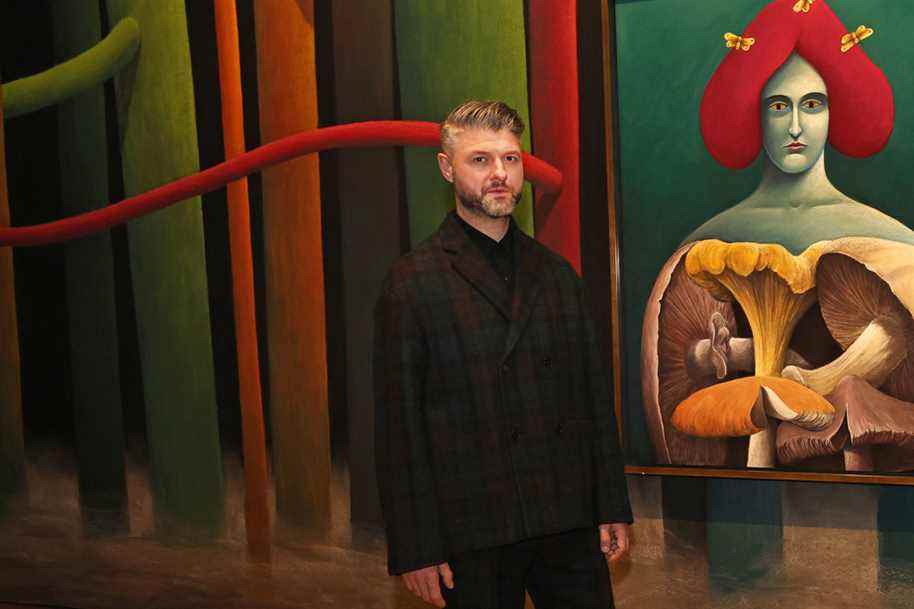On the eve of his reunion at Place des Arts, as part of Montréal en lumière, Pierre Lapointe publishes an unexpected album. purple hourresulting from a collaboration with the artist Nicolas Party and the Montreal Museum of Fine Arts, is a musical dialogue in which he reaffirms his links with the classics of Quebec and European song.
Posted at 8:00 a.m.
purple hour, an album by Pierre Lapointe published on Monday, should not exist. These 14 songs – seven covers and as many original compositions – were originally only intended to serve as the musical score for the exhibition by Swiss artist Nicolas Party presented at the Montreal Museum of Fine Arts (MMFA) from Saturday , itself titled purple hour.
There was talk of pressing a vinyl, but not of making a record to listen to at home. At a time when music from around the world is easily accessible on a phone, the singer was delighted that these songs were surrounded by a veil of rarity.
I thought it was a nice snub to say: you’re going to have to travel to listen to an album of this quality.
Pierre Lapointe, during a brief meeting at the MMFA
His songs had been designed to interact with the paintings and stagings of the Swiss visual artist, and it was first in this environment that they had to be heard.
In addition to drawing inspiration from the works of the visual artist, he mimed his approach. Since Nicolas Party has created a dialogue between MMFA works and his own creations, Pierre Lapointe has done the same: he has drawn on the Quebec and European chansonnier repertoire of pieces by Aznavour, Kurt Weill, Félix, Vigneault and others to then write new songs.

PHOTO PROVIDED BY THE PRODUCTION
The album cover purple hourby Pierre Lapointe, is a work by Nicolas Party.
From the song The dancing snake, by Léo Ferré, on a poem by Baudelaire, he created The Dance of the Conquistador. “I thought it was good to have a poet who had caused a scandal at the time: The evil flowers had been banned because it was too erotic,” recalls Pierre Lapointe. His own song, associated with works evoking original sin, is more carnal and more direct than those he has already written about sexuality.
In echo to The hymn to springby Félix, he offers his Hymn to the falla musical tribute to the late Michel Robidoux (Charlebois, Renée Claude, etc.), with whom he collaborated at the time of Punkt (The Devil’s Children). Inspired by performances of Marlene Dietrich by Nicolas Party, he covered the German version of a song by Pete Seeger (Sag mir wo die Blument sind). Pierre Lapointe has chosen tunes that have stood the test of time: the most recent, No I did not forget anythingfrom Aznavour, is 50 years old.
Whether covers or original compositions, almost all the songs of purple hour display this classicism that Pierre Lapointe has affirmed and sought to renovate since the beginning of his career. Here, the arrangements rely on violins and classical guitars with here and there a touch of brass.
Only one stands out completely from the lot: The purple hour 22, a slightly dissonant piece performed by pianist Philip Chiu, which Philippe Brault and Pierre Lapointe co-wrote on the computer. “We made a graph that we found beautiful, we made series of chords that we moved,” says the singer, evoking the exquisite corpses made by surrealist poets. “We are really in the contemporary composition [avec ce morceau]. »
This project completed, Pierre Lapointe returns to the stage on February 18 and 19 as part of Montréal en lumière for a reunion which is in fact the continuation of his tour. To thwart boredom, interrupted by the pandemic, but with four additional singers and a harpist. “As it’s at Place des Arts, he says, we’re going all out. »

